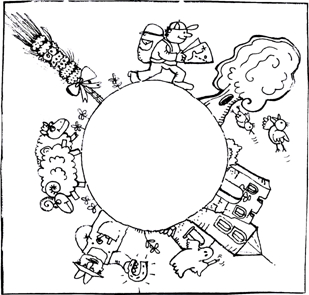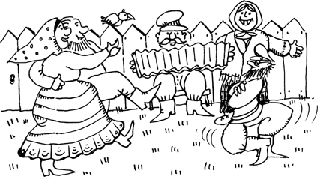Heritage and Ecomuseums
(text: Barbara Kazior)

Ecomuseums and Greenways
Many greenways are linked to ecomuseum initiatives, which are aimed at protecting and interpreting local heritage through involvement of local communities. The motivation is to improve quality of life and promote sustainable development. Ecomuseums are used to add value to regional, national and international greenways. In Poland, ecomuseum initiatives are being developed along the Amber Trail Greenway (Lanckorona Ecomuseum, Babia Gora Ecomuseum and Opatow-Iwaniska Ecomuseum). A multitude of local ecomuseums are being established in Lower Silesia, including the Smelting Furnace Ecomuseum in Tarchalice and the Cistercian Ecomuseum in Lubiaz, which increase the attractiveness of the Oder Valley Greenway. In the Bieszczady Region, the 'Three Cultures Museum' in Lutowisko has been established along the Greenbicycle East Carpathian Greenway.
What is an ecomuseum?

An ecomuseum is a network of objects or sites dispersed in an area, which presents a 'living whole' reflecting the natural and cultural values of the region and its population. The uniqueness of a region is presented in terms of its natural conditions, coupled with the past and present activities of local populations (Polish Environmental Partnership Foundation definition). An ecomuseum seeks to draw attention to the authenticity of a place through natural and cultural resources and related community activities, including promotion, education and regional development, aimed at joint action.
An ecomuseum is a grassroots intiative, based on local knowledge and intimate connection to the region, which seeks to draw out the history and tradition of a place by presenting them in an active and interesting way. Both heritage protection and economic benefits for local people are assured.
The term 'ecomuseum' was first coined by Hugues de Varine in France back in 1971 and first ecomuseums were created in Le Creusot in 1974 and Grande Lande in 1975. The ecomuseum movement has a long tradition also in Sweden, where several larger, regional initiatives have been developed.
Ecomuseum criteria

1. Developed on the basis of local natural and cultural heritage resources, with the aim of protecting, nurturing and interpreting them.
2. Focused on authentic heritage resources and contributing to their reconstruction and revitalization.
3. Organized around grassroots initiatives and locally-managed (e.g. Through a local or regional organization or agency).
4. Promoting environmentally-friendly technologies and transport.
5. Integrating all the key elements of an ecomuseum: information/documentation centre, sites and artifacts dispersed in a region, 'live' workshops and presentations, network of paths and trails, local events around a common theme.
6. Contributing to building and strengthening local identity and mobilizing local communities.
7. Developed on the basis of local cross-sector partnership.
Basic elements of an ecomuseum
1. Information and Documentation Centre - responsible for coordinating, developing, promoting and formulating a tourist product, as well as for undertaking relevant research, publishing materials and collating documentation.
2. Network of attractions (artifacts) dispersed in a geographic region defined by the objects and sites, which determine the character and uniqueness and so also the fundamental theme or basis of the ecomuseum. Attractions include churches, castles, country houses, chapels, characteristic architecture, local flora and fauna, viewing points, geological features and many others, depending what the region has to offer.
3. Workshops and demonstration projects, which generate a 'living' interpretation of heritage resources and often include local artisans and artists showcasing production processes and creativity.

4. Network of marked trails and paths, which allow people move between sites of interest. Ecomuseums promote non-motorized forms of transport, and so preference is given to walking trails, bicycle paths, horse trails, canoe routes and so on.
5. Regular and ad hoc events, organized to increase the attractiveness of the ecomuseum to visitors and locals and to encourage them to discover local customs and traditions.
Examples of Ecomuseums
- Falbygden-Ätradalen Ecomuseum in Sweden
- Three Cultures Ecomuseum in Lutowiska (Green Bicycle - East Carpathian Greenway)
- Lanckorona Ecomuseum (Amber Trail Greenways)






